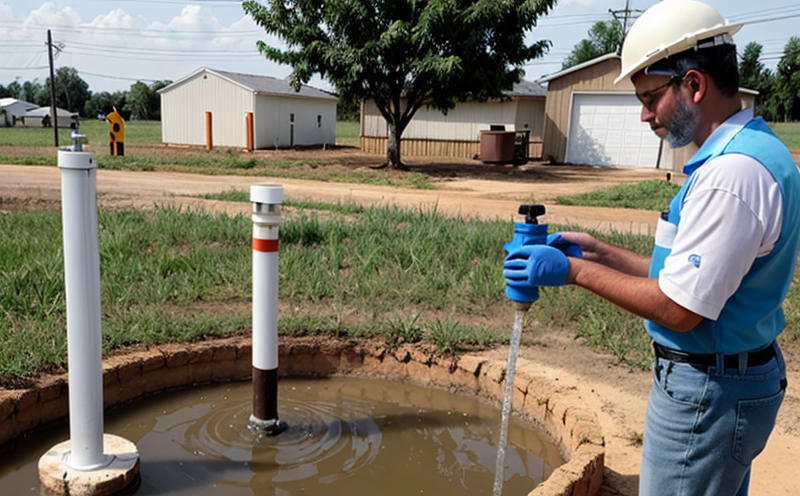EPA Method 550.1 Polycyclic Aromatic Hydrocarbon Testing
EPA Method 550.1 is a stringent analytical procedure designed to detect and quantify polycyclic aromatic hydrocarbons (PAHs) in water samples, particularly groundwater. PAHs are a group of chemical compounds that can pose significant health risks to humans and the environment when present at certain concentrations. This method is widely used by regulatory bodies, environmental agencies, and industrial facilities to ensure compliance with drinking water standards.
The primary focus of EPA Method 550.1 is on the analysis of PAHs in groundwater samples using high-performance liquid chromatography (HPLC) coupled with ultraviolet-visible detection. The method involves a multi-step process that includes sample collection, filtration, extraction, and cleanup to ensure accurate measurement of PAH concentrations.
The significance of this testing lies in its ability to identify potential contamination sources such as industrial discharges, petroleum leaks, or urban runoff. By detecting even trace amounts of PAHs, the method helps protect public health by ensuring that drinking water meets strict safety standards set forth by regulatory authorities like the Environmental Protection Agency (EPA).
The procedure outlined in EPA Method 550.1 is rigorous and precise, making it a cornerstone for environmental monitoring programs aimed at safeguarding groundwater quality. Compliance with this method ensures reliable data that can be used to make informed decisions about remediation efforts or changes in operational practices.
For accurate results using EPA Method 550.1, proper sample handling and preparation are crucial steps. Samples must be collected following specific protocols designed to minimize contamination from external sources. Once collected, the samples undergo filtration and cleanup processes before being analyzed via HPLC. This ensures that only relevant compounds contribute to the final measurement.
The method also specifies strict tolerances for quantification limits and reporting requirements, which further enhance its reliability as a tool for assessing groundwater quality. Regular calibration of instruments and adherence to standard operating procedures are essential components in maintaining consistent accuracy across all tests conducted according to this methodology.
Industry Applications
| Application Area | Description |
|---|---|
| Environmental Monitoring Programs | Used to monitor PAH levels in groundwater, ensuring compliance with EPA standards. |
| Industrial Facilities | Helps identify potential contamination sources and supports remediation efforts. |
| Water Treatment Plants | Ensures that treated water meets safety standards before distribution to consumers. |
Quality and Reliability Assurance
- Strict adherence to EPA Method 550.1 ensures consistent results across multiple laboratories.
- Calibration of HPLC instruments regularly according to manufacturer guidelines.
- Precise sample preparation methods to prevent contamination and ensure accurate readings.
- Use of certified reference materials (CRMs) for validation purposes.
Environmental and Sustainability Contributions
EPA Method 550.1 plays a critical role in environmental protection by helping to detect harmful pollutants early on, thereby preventing further contamination of groundwater resources. By providing reliable data about PAH concentrations, this method enables stakeholders to take proactive measures against pollution, fostering sustainable practices within industries and communities alike.
The use of advanced analytical techniques like HPLC supports more efficient resource management strategies aimed at reducing waste generation while enhancing overall environmental stewardship efforts. Through accurate monitoring facilitated by methods such as EPA Method 550.1, organizations can contribute positively towards achieving global sustainability goals.





